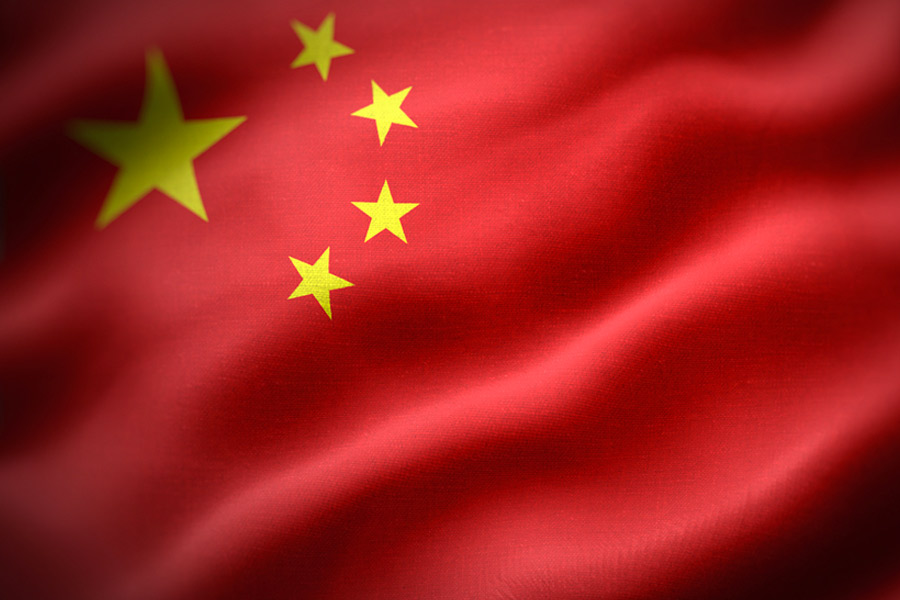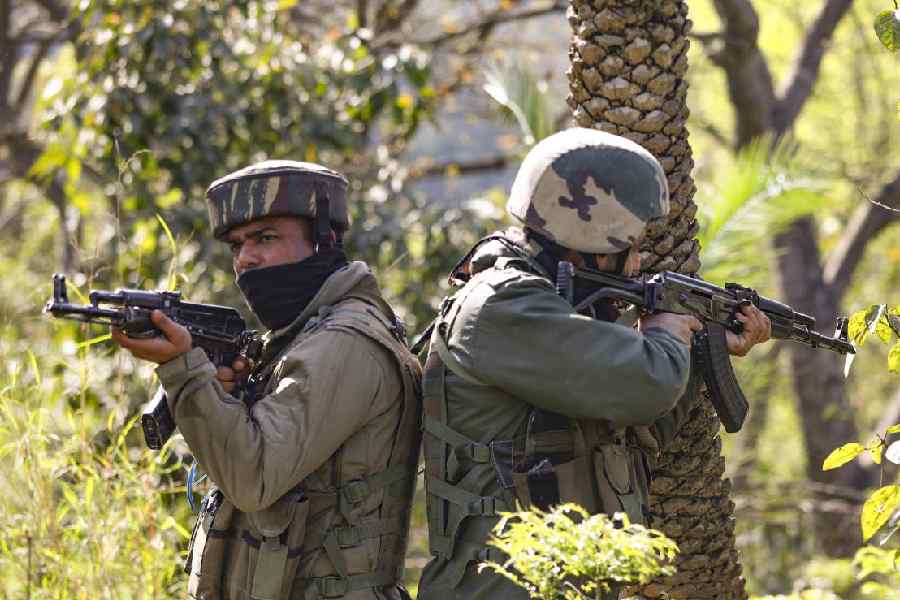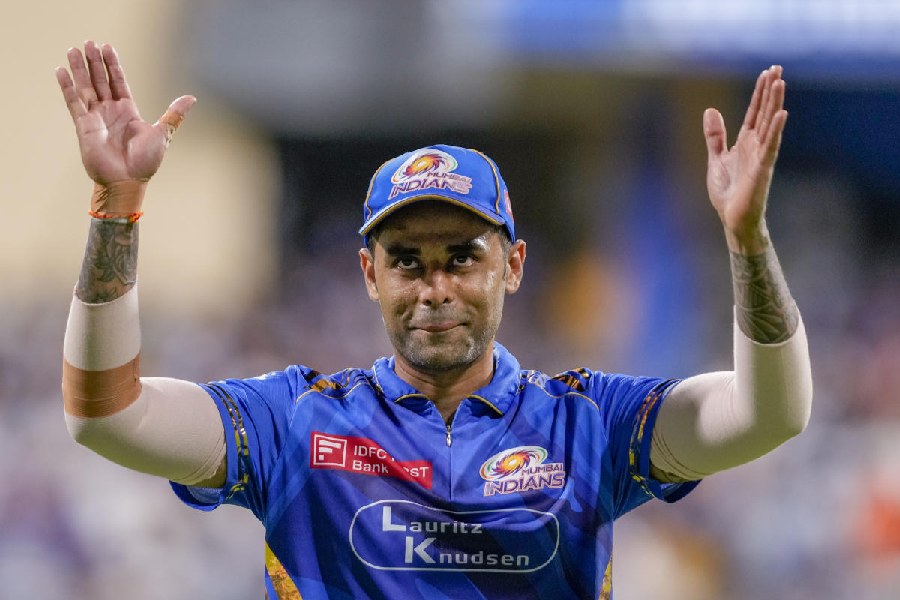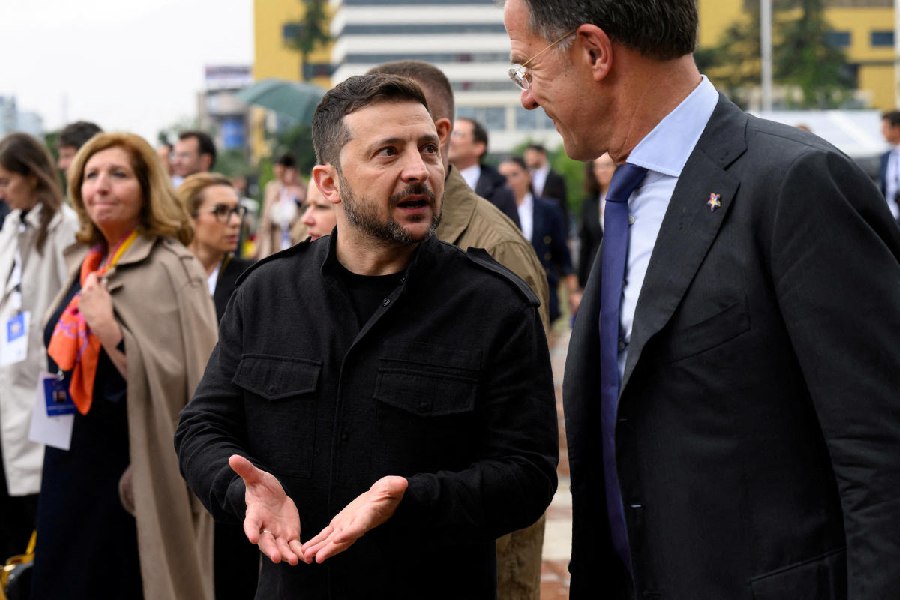 |
It would perhaps not be an exaggeration to say that visual artists do not usually write about their oeuvre — and when they do, the reader gets an amazing glimpse into the workings of creative minds. Although apparently not a pleasant man, the photographer, Samuel Bourne, had a facile pen that brought alive his work particularly in the Himalayas. He wrote a number of interesting articles in the British Journal of Photography that not only gave technical details but also evoked the beauty of the landscape that he intrepidly explored. A bank clerk from Nottingham, Bourne came out to India in 1862, by which time he had been experimenting with the camera for a while. While it is not clear why he came to this country initially, he soon turned his seven-year sojourn into a paying business proposition. He became the major holder in a lucrative partnership in the Bourne and Shepherd chain that had studios in a number of cities.
Not as well known — perhaps because they did not leave behind narratives of their work and travels — but no less talented were the duo, William Baker and John Burke, the earliest commercial photographers in the North-West Frontier. In From Kashmir to Kabul, Omar Khan provides a fascinating account of an integral aspect of British rule — its war machine — through the work of these two men. In 1861, William Baker, a retired army sergeant, started photographing in the area between British India and what was at that time Afghanistan (present-day Pakistan); some years later, he was joined by John Burke, a “teenage assistant apothecary from the Royal Artillery”.
However, sensitive to the requirements of the market, the Peshawur (Peshawar) studio of Baker and Burke did not concentrate only on military photographs and, although Burke was not greatly interested in the picturesque, he took many photographs of architectural monuments as well as of ethnic types — the ubiquitous nautch girls, the Viceroy’s camp at Lahore in 1894, views of Lahore fort, spacious roads in Rawalpindi and so on. At this time, although Kashmir was outside British India, its scenic beauty attracted numerous European tourists, and the catalogues of Bourne and Shepherd and that of Baker and Burke provided more photographs of the region than of any other location. A steady demand from those who could not escape the hot, dusty plains but “yearned for images of cool scenery even grander than what they may have remembered of Europe” ensured a huge market — and many prizes at photographic shows.
By 1867, collaboration between the two men who had built up impressive portfolios individually was formalized, and the studio, Baker and Burke, opened first in Peshawur and soon after, a branch office was started at Murree, where Baker became one of the founding members of the Murree Municipal Committee. The town had an influential British population and within a couple of decades, Francis Edward Younghusband, “one of the most celebrated and controversial heroes of the Great Game”, involved as he was in information-gathering well beyond British boundaries, was soon to become among the best-known figures of the region. He was born in Murree to John, an army officer, and Clara, and his family was committed to the photograph; there are fanciful portraits of his parents in “Yarkhand Costume” and a carefully composed 1874 side view of Durdens, the Younghusbands’ Murree home. The image has all the attributes of a stage set with John standing on the veranda, and Clara in a jhampan (dandie). Both are positioned to the viewer’s left while the right of the frame is occupied by the bhisti (water carrier), darzi, doodwala and other domestic servants. In the front is a group of women, ayahs, who tend to Clara’s home school for the children of the servants. Francis, then twelve, is away in boarding school in England. He shared this fate of enforced severance from the family with scores of children of the raj; a number of both men and women later recounted those days of close to abject misery in memoirs, letters and journals. The aim of the photograph was quite clear — it was to memorialize as well as serve as a mnemonic device for the Younghusbands and, more importantly, for the wider kin group back home. Families needed to be reminded of what colonial life implied; it was hard work in inclement climates among an alien and often recalcitrant people. If it meant an elaborate lifestyle, this was merely just compensation for many hardships and perceived deprivations. A steady source of income for photographers were European families as well as some Indians eager to be photographed in the carte-de-visite and cabinet size formats.
Clearly though, for John Burke, excitement lay in pictorializing war and destruction — and not in creating stage-set-like images of prominent British families. Soon, the younger man garnered an impressive portfolio by accompanying military expeditions to Afghanistan. Between 1838 and 1919, the British conducted several military campaigns in the area and the photographing of the Second Afghan War, 1878-80 — “the defining struggle of the Great Game” — became a high point of Burke’s career. By this time the partnership had come to an end. Although he owed his early introduction to photography to William Baker, Burke broke with him later in his career, and in 1873, set up offices in Murree and Rawalpindi. He kept shuttling between cantonments in the North-West Frontier and the Punjab to take a range of military and official photographs. Much later, Burke opened a studio in Lahore. In 1878, he travelled with British troops as they invaded Afghanistan, taking thousands of photographs during the two-year conflict. Apart from their usefulness to the military establishment, his two major catalogues had high commercial value as well.
There is not much blood and gore shown of the Great Game but rather some very interesting compositions of groups such as Officers of Her Majesty’s 51st Regiment on Sultan Tarra where three Afghans have been placed at a point much higher than the British soldiers — “a typical Burke twist on the expected composition of Victorian imagery of Europeans and natives”. Here the pecking orders of race and class are deliberately subverted. Burke repeats this twist in the present image taken near the Khyber Pass in 1878-79, deceptively titled Warriors against Hillside. Again, it is a carefully composed shot, with the position of each of the 17 men carefully worked out. All except one are “locals”. The eye strays to the man in the second row from the top, clad in a dark tunic and striped turban. He is seated behind a boulder and does not engage with the camera but looks into the middle distance, his light eyes arresting. He is Colonel Robert Wharburton, an Anglo-Afghan, the son of an army officer and an Afghani of noble descent. The rulers obviously used his mixed parentage to advantage, appointing him political officer in the Khyber Pass; his task was to bring to heel the Afridis, regarded by the British as the most aggressive of all Pathan tribesmen. Wharburton was apparently greatly successful, writing of the Afridis’ “great devotion” once the barrier of mistrust was done away with. John Burke was commissioned to take this photograph of Wharburton with a group of men with whom he worked. Although heavily armed, the body language of most is fairly relaxed; the aim of the photograph was perhaps not to represent a fighting force ready for action, but to document the usual work space of the British army in those inhospitable terrains.
At a time when Baker and Burke were in business, although photography within the studio was the norm, professionals had to be versatile enough to lug their paraphernalia and relevant staff to outdoor locations. The two men appeared equally at home with the camera within enclosed spaces as well as on site, whether this meant taking images of a snowbound landscape in Murree or of the detritus of battlefields. It was significant that the formal structure of a studio photograph or even a family or group painting was carried over to the outdoors. The directorial role of the photographer continued to be crucial, and though important clients like the Younghusbands or Robert Wharburton must have had their say, it is likely that considerable negotiation as well as mock shoots preceded the final exposures. By the early decades of the 20th century, things started changing and the studio was no longer the sole repository of the camera nor the professional photographer the possessor of a unique skill. Photography became a part of middle-class life worldwide. Quite often the camera was a prized accoutrement in the hands of the domestic photographer charged with the responsibility of recording the life and times of an increasingly visual population. The elite may still have hired the likes of Bourne and Burke, but for most, the Brownie was a cheaper and less time-consuming option.











